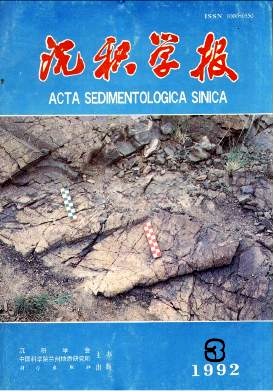Progress in Coal-forming Theory of Marine Facies
- Publish Date: 1992-09-10
Abstract: Advancing and deepening in coal-forming theory of marine fades undoubtedly bring the new reform and progress in many fields of the coal-bearing sedimentology. It takes the further steps to enrich and deepen the theory. The foundation for reunderstanding the huge basins of coal accumulation on Late Paleozoic, exploring the new coal accumulation law and enlarging the new coal resources is established. These progresses and achievements are discussed from the following seven research fields. 1. Coal-forming environments of marine facies - coal-forming models of peat flats. Mangroves or tidal plants having a similar bioecology with mangroves could grow abundantly in the intertidal and supertidal flats of tropical and subtropical zones and could form the peat deposits over a large area under the suitable condition. Such the direct coal-forming environments in the tidal flats are called "peat flats". Peat flats and peat swamps are two kinds of environment types,with completely different natures, the first of which is the marine tidal flat environments. According to the different characteristics of peat fiats on coal-bearing formations of Late Paleozoic in China, peat fiats can be classified into five models such as: lagoon peat flats, back barrier peat flats, tidal delta peat flats, carbonate platform peat fiats and back reef peat fiats types. 2. The research of comparative sedimentology on modern tropical mangrove tidal flats. This paper deals with the characteristics of mangrove plant communities, the deposits of the mangrove tidal flats and the coal petrographic compositions of the mangrove peats, and points out that the sulphur in mangrove peats is characterized by high pyrite contents, the sulphate in water medium of the tidal flats is the final resource of sulphur and the accession of sulphur mainly takes place in penecontemporaneous stage. "The present is the key to the past". It is an important apporach to establish the coal-forming environment of marine facies in ancient peat fiats from the research of the modern mangrove tidal flats and mangrove peats, and utilizing the method of the comparative sedimentology. 3. The character of the epeiric sea, the tidal deposits and their ldading role on coal-bearing formation of Late Paleozoic in China are demonstrated and recognized. Authors put forward that the coal-bearing formations of Late Paleozoic were formed respectively in epeiric environments of Huabei and Yangzi plates which are both huge basins of coal accumulation in North and South China, and are made up with distinctive clean, muddy or mixed coal-bearing sedimentary systems in epeiric sea. 4. Platform barrier island nad complex sedimentary systems in coal-bearing formation. If the marine coal-forming environments of peat flats are similarly present a lot except the continental coal-forming environments of swamps, and the restricted zone in coal- forming environments of marine facies is broken through. The new sedimentary systems of coal-bearing formations will be discovered. The barrier island, carbonate platform, the complex with barrier island and platform and the complex with barrier island and delta sedimentary systems in coal-beraing formation have been put forward. 5. Geological events and their depositional records in coal accumulation bsins, of which storm and volcanic event deposits are more important. Tempestites are classified as the back flow tempestites -distal, proximal and proximal shallow water carbonate tempestites, the stirring carbonate tempestites and the proximal sandstone tempestites. 6. The methodology on the study of lithofacies-paleogeography of coal field. This can be briefly summarized as the method of "quantitative environment analysis of sections and drawing up maps by means of sedimentary facies ratio". First, the quantitative environmental analysis of the single field section is as the basis; second, the procedure from point to line, from line to face and from face to three-dimensional geometry is used to combine field observation with indoor analysis; third, on the basis
| Citation: | Liu Huanjie, Jia Yuru, Long Yaozheng, He Kanglin, Ma Hongying, GuoYinghai, Shi Jian, SangShuxun. Progress in Coal-forming Theory of Marine Facies[J]. Acta Sedimentologica Sinica, 1992, 10(3): 47-56. |






 DownLoad:
DownLoad: